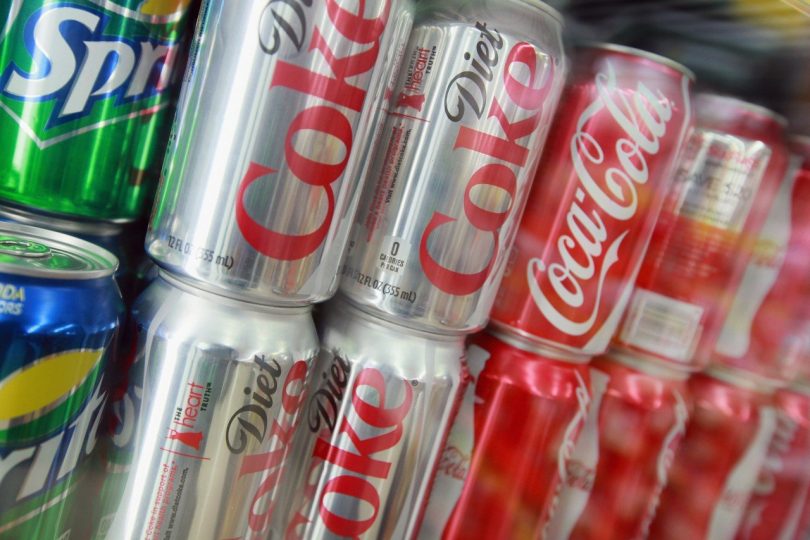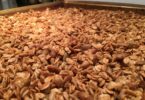This is the third article in a four-part weekly series that looks at how food and beverage companies fared during the pandemic. Previously published articles can be found here.
Next week, Food Dive looks at how companies are likely to perform moving into the post-pandemic period.
As Coca-Cola President and CEO James Quincey began the conference call that accompanied the soda giant’s quarterly earnings release on July 21, he solemnly and calmly opened with an overview of the bad news in the company’s most recent quarter.
“We’ve just closed the books on what has arguably been the toughest and most complex quarter in Coca-Cola history. And given the global pandemic, of course, this comes as no surprise,” Quincey said, according to a transcript.
The late spring and early summer quarter is usually a time of year when Coca-Cola does some of its best business, but last year, sales were down 28% — more than $2 billion off — when compared to 2019. The company saw a 22% decline in concentrate sales, which generally is for businesses that serve its beverages in soda fountains. And this contributed immensely to the cratering sales. In its earnings press release, Coca-Cola noted that a full half of its sales come from away-from-home channels. With restaurant dining rooms, leisure activities and destinations shut down because of the COVID-19 pandemic, there was far less demand for the concentrate.
While Coca-Cola has a strong nonalcoholic beverage portfolio, its reliance on a single type of product was proving to be a liability. As it was hemorrhaging sales, most CPG companies were in the midst of the largest uptick in business they had seen in recent years. According to statistics from McKinsey & Company, the entire food CPG business in general expanded 12% during the pandemic.
Coca-Cola isn’t the only company that saw its financial fortunes fall last year. Companies that have a less diversified portfolio — especially those primarily selling soft drinks, meat and alcoholic beverages — also had sales that were more opposite of the general trends. Here’s a look at why, and what they could have done better.
A category that’s gone flat
A common thread between companies that suffered sales declines as others were enjoying unprecedented growth is reliance on already-troubled categories. For Coca-Cola, that burden was soda.
What was once the beverage of choice a couple of decades ago has since been in steep decline. Figures from the National Center from Health Statistics showed that sugar-sweetened beverages made up just 10.2% of what U.S. adults older than 20 drank in 2018 — down from a daily drink for about 79.7% of children and 61.5% of adults 15 years earlier.
Even before the pandemic, these kinds of numbers signaled danger in the future for soda companies, said Anand Raghuraman, a retail industry expert and consultant.
“The carbonated sugary beverages category was already struggling, was already declining,” Raghuraman said. “And I think as people sat at home and started to maybe work out a little bit more, or started adding a little bit too many pounds to themselves, they thought, ‘I don’t want to be drinking this.’ ”
For its part, Big Soda has spent years taking action to buffer the negative impacts of the eroding popularity of carbonated soft drinks. Companies have developed beverage brands in growing categories, like PepsiCo’s 2018 launch of bubly seltzer water.
As Quincey got ready to take the helm of Coca-Cola in 2017, he knew that he needed to broaden the company’s portfolio beyond soda. The beverage giant has made acquisitions of diverse companies with strong growth potential, like its $5.1 billion purchase of Costa Coffee in 2018 and the 2017 acquisition of Mexican sparkling water brand Topo Chico.
Optional Caption
Scott Olson via Getty Images
But while PepsiCo’s beverage division also saw major drop-offs in sales just like Coca-Cola — including a 7% drop in North American drink sales and a 42% fall in segment profitability when compared to the previous year in the quarter that ended on June 13, 2020 — the company as a whole didn’t suffer the magnitude of decline. PepsiCo is diversified far beyond beverages, with two other major food divisions: Frito-Lay and Quaker Foods. As consumers sought more snacks and took more time for breakfast during the pandemic, sales for those two divisions boomed.
Stacey Haas, a partner at McKinsey & Company, expects some sales to come back to soda companies as the pandemic lockdowns ease.
“We see this pent-up demand in consumers to get out, to go back to restaurants. And so I think there’ll be a natural kind of bump and surge that that occurs once you get to herd immunity state,” Haas said.
But, she continued, it’s hard to tell if that will be lasting. After all, the decreasing popularity of sodas does not bode well for the segment’s future. More trendy segments, from sparking water to functional beverages, might hold the keys to the future.
“I think what will be the difference maker is how much in this time period is coming from innovating into these spaces that are likely to continue to grow and not just counting on the return of on-premise [sales],” Haas said.
Other categories have also proven vulnerable to the pandemic’s forces.
“The carbonated sugary beverages category was already struggling, was already declining. And I think as people sat at home and started to maybe work out a little bit more, or started adding a little bit too many pounds to themselves, they thought, ‘I don’t want to be drinking this.’ “

Anand Raghuraman
Retail industry expert and consultant
Companies that focus solely on meat also did not grow as quickly as others. In the first months of the pandemic, as manufacturers were trying to meet escalating demand and figure out how to keep workers safe, meatpacking plants became COVID-19 hotspots. Several temporarily shut down for cleaning, reconfiguring and to give sick workers a chance to recover. And they got behind on processing, causing shortages at grocery stores. Raghuraman said all of this negative press might have impacted consumers’ perception of the companies themselves.
But it also impacted consumer behavior, especially among younger generations, Raghuraman said. As meat departments had empty shelves and the media covered devastating COVID-19 outbreaks at food plants, these consumers picked up more plant-based meat, he said. In 2020, plant-based meat sales were worth $7 billion with a 27% growth rate compared to 2019, according to SPINS data from the Good Food Institute and Plant Based Foods Association. Raghuraman expects many of these consumers to keep buying the plant-based products — which he described as tasting similar and being able to play a similar role in the meal.
To be sure, the consumer move toward plant-based meat consumption had already started before the pandemic, Raghuraman said. However, like many gradual trends, the COVID-19 pandemic acted as an accelerator.
Tyson, which has a core business in the meat industry, saw pandemic-related volatility in its sales during the three months after the pandemic hit the United States. Overall, sales dropped nearly 8% when compared to 2019. The company sold less of all of the meat it produces — beef, pork and chicken — as well as prepared foods. The reasons behind these declines varied from less foodservice demand to processing backups and problems at the company’s facilities.
Stuck in the middle — and not selling
For millions of consumers trapped at home during the pandemic, food and drink became a sort of escape. This shaped the fortunes of other categories and the companies that depended on them.
What consumers bought to eat at home varied depending on who they were and their financial situation, Raghuraman said. People who were used to going out to eat, stayed employed and continued living comfortably redeployed their money. Instead of going to restaurants, they bought high-end alcohol, more expensive bread and quality food ingredients. He described it as a “let’s start living life a little bit more again” type of attitude.
“So we started seeing initially frozen dough, for example, sold out in California for pretty much the entire month of May because people wanted to make their own pizzas,” Raghuraman said. “And they didn’t want to buy ready-made frozen pizza. They actually wanted to make it with heirloom tomatoes and other types of kind of nicer tomatoes.”
According to a November report from IRI, premium and super-premium offerings have seen the most growth during the pandemic, making up nearly a quarter of the money consumers spent on food and drink at grocery and multi-outlet stores. In the first six months of the pandemic, premium brands saw 0.7% growth over the same period in 2019. Super-premium brands saw 1% growth. At the same time, mainstream brand sales dropped 1.2%.

Optional Caption
Jeff J Mitchell via Getty Images
There are also the consumers who haven’t been as comfortable during the pandemic. People who have been struggling with work and income amid business shutdowns and societal changes have not had the funds to spend on higher quality food. And for an escape, they’ve reached more for less expensive libations.
The primary beneficiary of this trend was alcohol makers. Global alcohol giant AB InBev saw significant U.S. sales and share growth in the third quarter of 2020. Part of this was due to streamlined logistics, which helped get beverages in consumers’ hands, the company said in its earnings report. But another part of was the growth of Michelob Ultra and Bud Light Hard Seltzer — helping drive 145 basis points of market share growth for these drinks.
Because most alcoholic beverage producers are only in that sector, they are seeing most of the sales impact of consumers flocking to premium and budget drinks.
“If you’re stuck in the middle, where you’re neither value or value-add, you’re going to struggle — and have already seen that,” Raghuraman said.
As a case in point, the third quarter of 2020 was not great for AB InBev’s U.S. sales as a whole. Anheuser-Busch, the U.S. division of AB InBev, owns many of the nation’s most popular beer brands that are seen as middle of the road, including Budweiser, Bud Light and Busch. That quarter’s earnings report said the company’s core brands, not including Michelob Ultra, saw sales slipping that quarter, losing 120 basis points of market share as people looked to more premium offerings.
“If you’re stuck in the middle, where you’re neither value or value-add, you’re going to struggle — and have already seen that.”

Anand Raghuraman
Retail industry expert and consultant
Constellation Brands, which has been divesting its lower-end brands to pursue a more premium portfolio, saw increases in both its beer and wine sales. Constellation President and CEO Bill Newlands told investors on the call accompanying the earnings report from the final three months of 2020 that U.S. sales of their premium Mexican brews — Corona and Modelo, as well as Corona Hard Seltzer — were a bright spot in their quarter and are positioned for more growth.
“Constellation’s beer business continues to be one of the largest contributors to U.S. beer industry growth,” Newlands said, according to a transcript of the call.
And super-premium spirits also saw their sales skyrocket 12.7% last year, according to the Distilled Spirits Council of the United States’ 2020 Economic Briefing. Spirits have a long shelf life and are not quickly consumed, and the report called them something consumers consider “affordable luxuries.”
Will that trend continue? A study from IRI released earlier this year says it is doubtful. The firm predicts that as people are able to leave home more, their money will be spent in other ways; in particular, they will look more for value brands.
Not the right thing
Many CPG items are designed for on-the-go consumers, but when these consumers became homebound, sales slowed down.
One of the biggest slumps came to the performance nutrition bar category. Grocery sales data shows sales fell as much as 20% in the first two months of the pandemic. According to Nielsen statistics, sales of performance nutrition bars were down 17% in the first seven months of lockdowns.
While these types of bars offer the health credentials consumers are looking for, one thing many people have more of nowadays is time. A grab-and-go hit isn’t what many need.
“Snack bars, which kind of were seen as those go-tos on the commute, on the way to the gym and at the airport and stuff, … how do you make this relevant when you’re working out at home and spending more time at home?” said Nick Fereday, executive director of food and consumer trends at Rabobank. “Is the snack bar the go-to snack when you’re watching Netflix?”

Optional Caption
Courtesy of Mars Wrigley
Gum and breath mints, which already faced stagnating sales in recent years, also saw their sales droop. With consumers leaving home less — and often then with their mouths covered by masks — the National Confectioners Association reported in its 2021 State of Treating report consumers said they had less reason to buy products in this category. Sales of gum and mints were down 22.7% in 2020, with unit sales down 27.1%, the report said.
However, companies that make these types of products are continuing with innovation. Mars Wrigley, which has one of the largest gum portfolios, announced last year that it would be launching new gum innovations in 2021: Rockin’ Raspberry Lime Extra and a 30-piece mega-pack of Orbit. While a bigger pack size doesn’t seem to be much of an innovation, Mars Wrigley said this is actually what is driving growth and relevancy of the gum channel. In a presentation in November, Jim Dodge, vice president of convenience for Mars Wrigley Confectionery, said the company is confident gum sales will return.
“It’s going to bounce back,” he said. “This category is extremely resilient. What are we doing about this? We are going all in on advertising in the fourth quarter. So when consumers come back, gum will be top of mind, and they will engage in the category.”
Fereday said resurgences of some of these products that don’t quite fit with the pandemic consumer could happen, but it depends on the company and the brand.
“It’s the tried and tested thing: showing your relevance,” he said. “…It’s really down to them, to try through their marketing and advertising to remind [consumers] of the relevance.”








